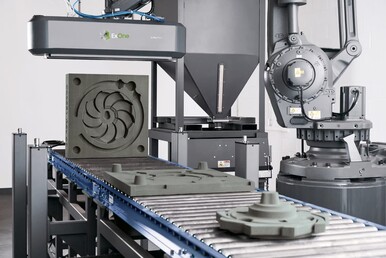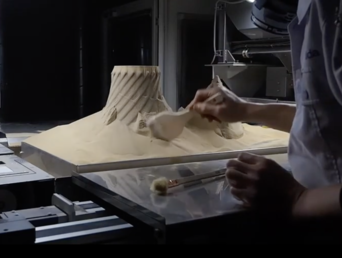Tesla reportedly uses 3D printed sand moulds for ‘gigacasting,’ large car parts

Anyone remotely familiar with 3D printing technology knows its biggest appeal: the ability to design and prototype multiple iterations of a part quickly and at low cost. Tesla, a company known for its innovative approach to solving production problems, hasn’t been blind to the advantages. Recently, we reported about its new ‘gigacasting’ process, which involves casting large, complex car parts as a single piece, instead of stamping and assembling it in several complex and costly steps. The sources who broke this story also detailed the challenges of implementing this new process. And it appears that 3D-printing is at the core of the solution.

The reason why manufacturers avoid casting large components is because the sand moldings required are prohibitively pricey to develop. They can cost up 4 million dollars per mold, with each modification adding another $100,000. According to the sources, Tesla has been exploring a 3D printing technique called binder jetting to develop these molds. Binder jet printers are able to produce a complete 3D form by applying a liquid binder layer-by-layer according to the digital design. This is similar to selective laser sintering (SLS), except that a binder agent is used instead of melting to turn the powder into a solid shape.


Each print takes only a few minutes, so prototypes can easily be tweaked. The entire design validation cycle costs just 3% more than the conventional method. The overall development time is also reduced from a year to just two or three month. Tesla plans to leverage another important strength of 3D printing, the possibility of greater complexity in the model, since large structural parts often feature hollow voids to reduce weight and improve crash-performance.
Notably, BMW and Cadillac have already incorporated binder jetting into their development pipeline, using printers from Voxeljet. Similar machines are offered by Desktop Metal’s ExOne. While significant challenges remain in bringing gigacasting to the factory, with Tesla still working out the details, it’s safe to say that 3D printing continues to facilitate innovation across industries in new and unexpected ways.
Buy the ANYCUBIC Photon Mono X2 resin 3D printer on Amazon

I’ve been interested in technology for a long time, but my passions for music and photography led me to explore audio and imaging technologies and learn about all the tools which had fascinated me. I have degrees from both electronics engineering and business administration, and worked as both a software developer and in marketing. In addition to being an amateur photographer and musician, I also enjoy reading, being outdoors, and cooking.